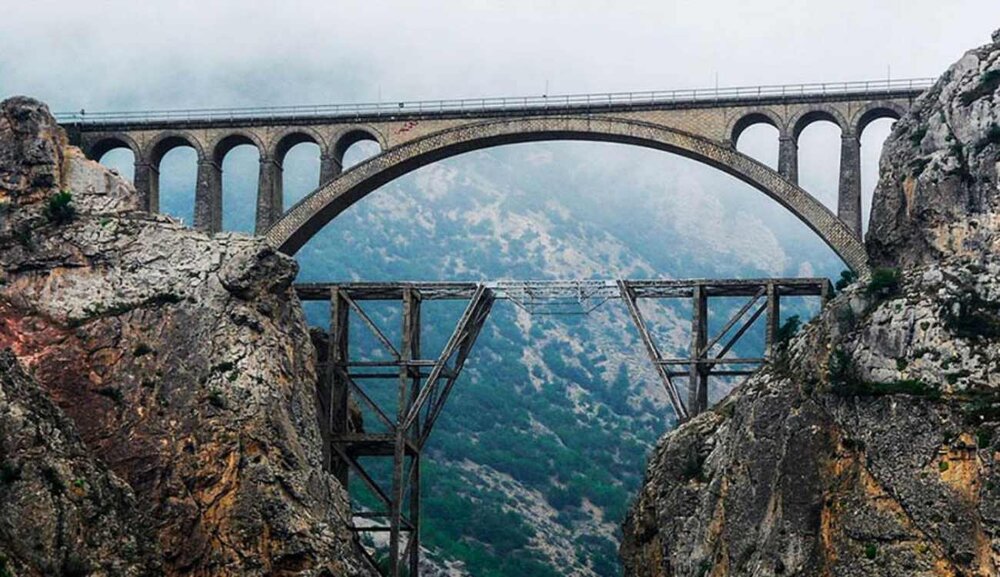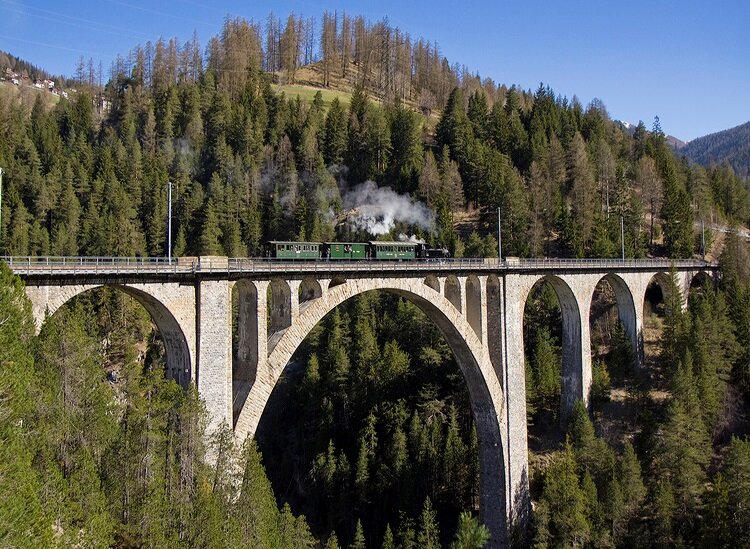Sister arch bridges: one in Iran, the other in Switzerland

TEHRAN – The masonry arch bridges of stone or brick have long been constructed across the globe, some lasting for millennia. They are also iconic for having similar characteristics, amongst them Veresk Bridge in Iran’s Mazandaran province and Wiesen Viaduct in the canton of Graubunden, Switzerland, both designed in the 20th century for single-track railway.
Swiss Embassy in Iran on Sunday, January 26, posted a story on its twitter account (@SwissEmbassyIr) showing pictures of the two bridges. “The iconic Veresk Bridge in #Iran’s Mazandaran Province, constructed in 1937 by a multinational team including Swiss engineers. A similar single-track railway construction, the Wiesen Viaduct, inaugurated in 1909, is located in the Swiss canton of Graubünden (photos David Gubler),” the tweet wrotes.
The Veresk Bridge, located in Veresk district of Savad-Kooh county, connects the railway between Tehran and the Caspian Sea region. The bridge is known as one of the masterpieces of the Danish engineering firm Kampsax, (consisting of Danish, German and Austrian engineers) serving the Trans-Iranian Railway network in northern Iran. The construction of this bridge included craftsmen of many nationalities, including Swiss and Italian people.
Near the bridge is a memorial structure built in memory of all the construction workers who lost their lives in the course of building the bridge and its nearby tunnels. The Chief Engineer, Austrian Walter Aigner, following his wishes, is buried in the local cemetery of Veresk.

Wiesen Viaduct in the canton of Graubunden, Switzerland
Under the bridge is a tunnel through which trains pass after crossing the bridge and gradually dropping altitude and before pulling into the train station. During World War II, it was known as the Pol-e-Piroozi, or the “bridge of victory”. Currently, trains connecting Tehran to Gorgan or Sari pass over the bridge an average of four times a day.
The Wiesen Viaduct, made from concrete blocks with dimension stone coverage, spans the Landwasser southwest of the hamlet of Wiesen, in the canton of Graubunden.
Designed by the then chief engineer of the Rhaetian Railway, Henning Friedrich, it was built between 1906 and 1909 by the contractor G. Marasi under the supervision of P. Salaz and Hans Studer.
UNESCO registration
Iran’s tourism ministry pursues possible inscription of cross-country railways, which includes arrays of bridges including the Veresk Bridge, stations and other historical monuments on the UNESCO World Heritage.
This industrial heritage, which dates from the World War I and II, contains expanded railway networks mainly stretched from south to north. It also includes a variety of monuments such as Tabriz railway station as well as Veresk and Sekhat-tala bridges built at hard-to-access points of deserts or highlands.
AFM/MG
Leave a Comment